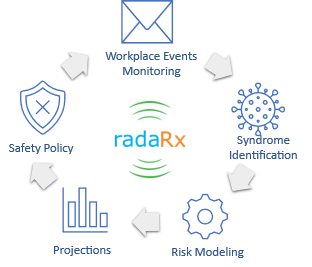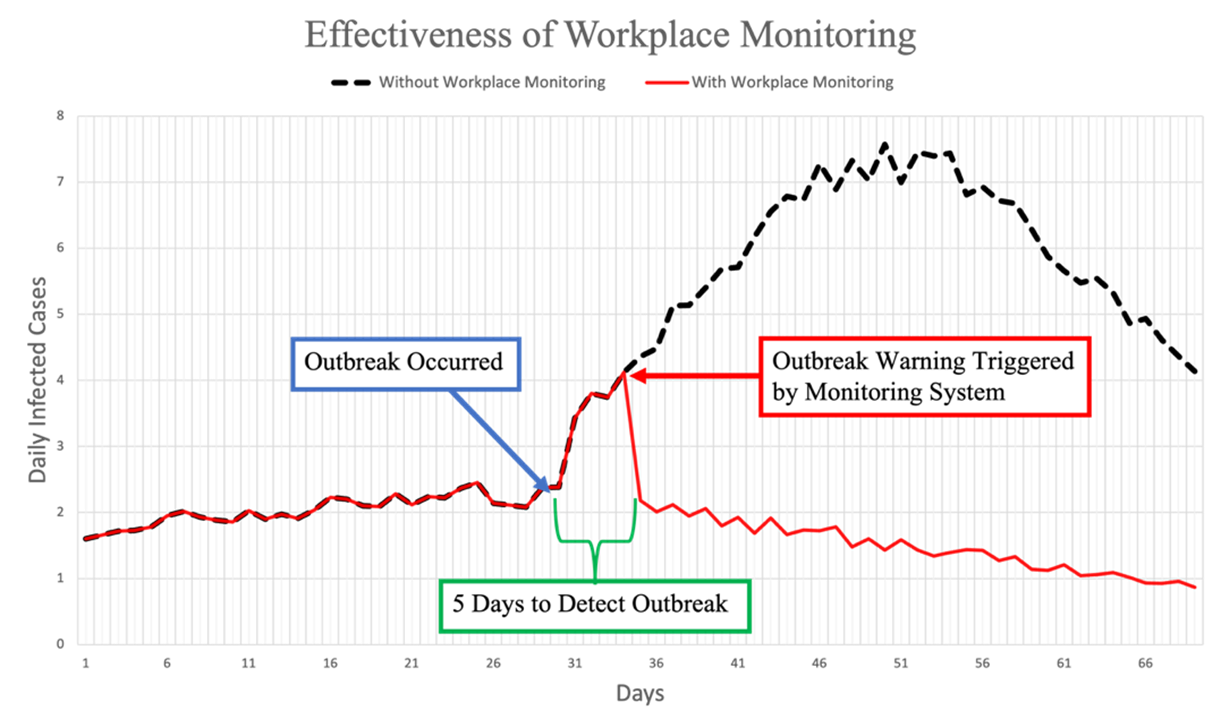

KENNESAW, Ga. | Jan 18, 2023
With the most severe flu season in a decade in full swing, businesses are anxious about the health of their employees, both for the employees’ wellbeing and the company’s bottom line. Faculty and student researchers at Kennesaw State University recently partnered with health technology company radaRx to determine the effectiveness of new technology designed to help businesses monitor employee health and prevent infections.

“RadaRx is on an ambitious journey to improve business resilience from common workplace infections and needed research-focused methods to validate the effectiveness of our approach,” said Saurabh Srivastava, founder and CEO of radaRx. “The KSU team led by Dr Sweta Sneha brought unique cross-functional skills, including syndromic analysis, healthcare policy, and data science to collaborate with the radaRx team on this complex initiative. The research partnership has been invaluable for us.”
An estimated 8.7 percent of all payroll costs are tied to absenteeism and 35 percent of overall absenteeism is due to personal illnesses. The total impact of infectious diseases on the US economy is estimated at $200B based on 158 million full-time employees with a median income of $41.5K per employee.
Currently, most organizations make their employee health policy decisions for common illnesses like flu or gastro-intestinal issues based on data from public health agencies. However, this data, which relies on reporting from doctors and hospitals, has several shortcomings:
These shortcomings make it difficult for organizations to predict infection risk at work locations and to take appropriate and timely actions to mitigate the spread of infection.
With the goal to address these gaps and improve workplace safety against infectious diseases, radaRx developed an “always-on” system for assessing, predicting, and mitigating workplace risks associated with infectious diseases.
Rather than tracking data from doctors and hospitals, radaRx focuses on tracking employees’ symptoms before a diagnosis. Here is how this system, called syndromic surveillance, works:

Syndromic surveillance has been used by public health professionals to rapidly detect spikes in illness. Using infectious disease modeling, the radaRx solution identifies illnesses, determines the growth factor and risk, and forecasts future infections and absenteeism.
The research team at Kennesaw State University simulated a series of outbreaks of different illnesses affecting different company sizes using the popular SIR (Susceptible, Infected, Recovered) epidemiology model.
The following example considers a flu-like illness outbreak at an organization with 500 employees.

The image shows the simulated daily infected cases for the organizations with and without workplace syndromic surveillance. The outbreak begins around day 30. The black line represents the daily infected cases without surveillance and the red line shows the daily infected with workplace syndromic surveillance.
When the risk monitoring system detects an outbreak from the reported infections (after around 5 days), it alerts the managers and recommends that employees wear masks. If employees follow the recommendations, daily infectious cases are significantly reduced over time.
The simulation study demonstrates the potential benefits of workplace syndromic surveillance. It significantly reduces the peak of daily infections and the total number of infections in each outbreak cycle. For a medium-sized company with 500 employees, the workplace syndromic surveillance program reduces the infection peak and the overall number of infections by 50 percent. For larger companies, the reduction could be as much as 75 percent.
The Kennesaw State study shows businesses can see significant benefits from having a workplace syndromic surveillance system. While the specific response would of course vary based on the business and the outbreak, i.e., respiratory, food-borne, water-borne etc., syndromic monitoring can combine with guidance from the CDC to create a playbook to follow during an outbreak that could lead to a healthier workforce and lower costs.
Collaborations with organizations like radaRX allow academic programs like Kennesaw State’s Master of Science in Healthcare Management and Informatics program solve real-world problems by working with real-world data. Industry partnerships allow us to perform the valuable job of turning theory into practice.
Authors
Sweta Sneha, Executive Director, Master of Science in Healthcare Management and Informatics Program
Yifan Zhang, Assistant Professor of Quantitative Analysis
Weiwei Chen, Assistant Professor of Economics
Sanad Biwas, Ph.D. Research Assistant, Analytics and Data Science